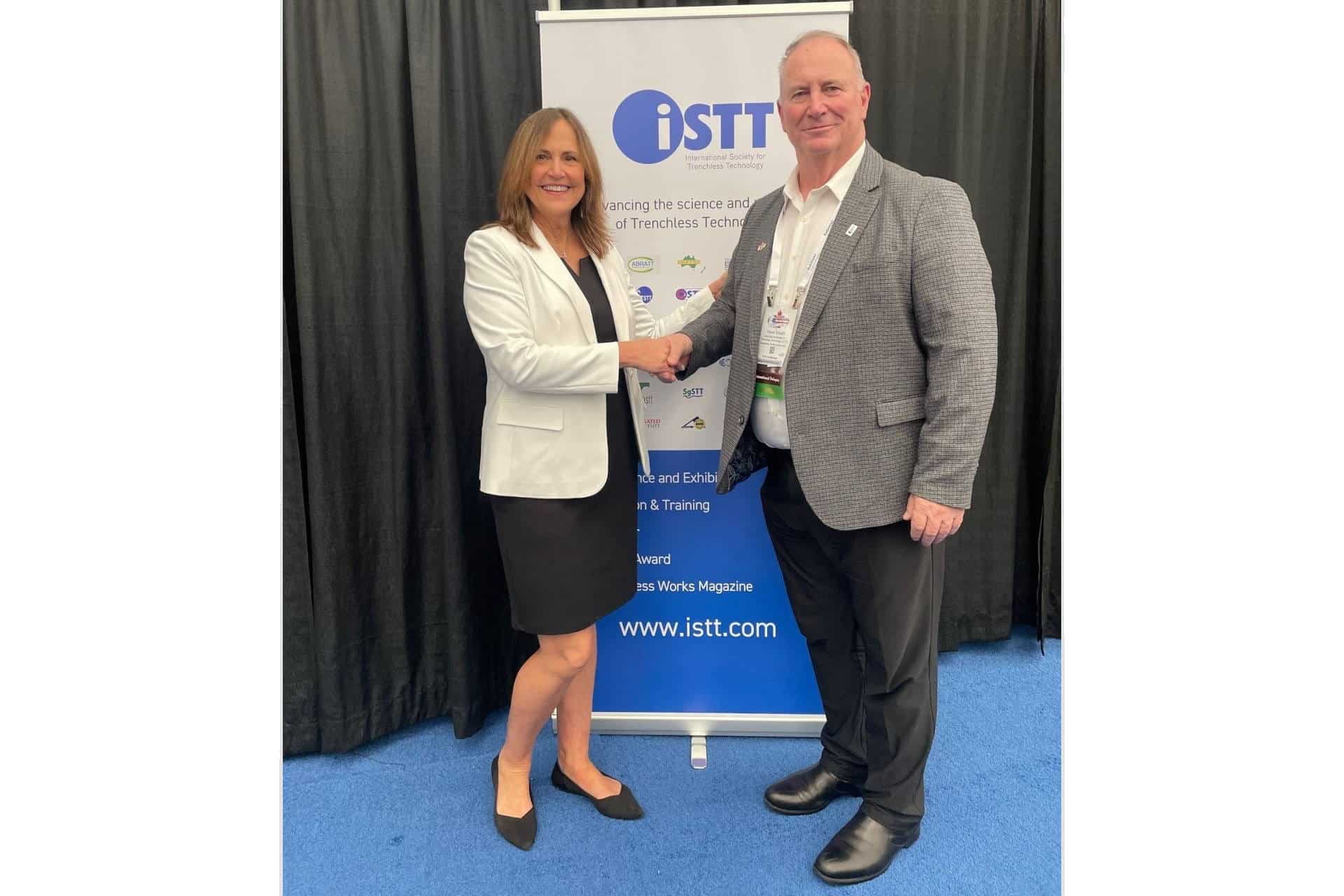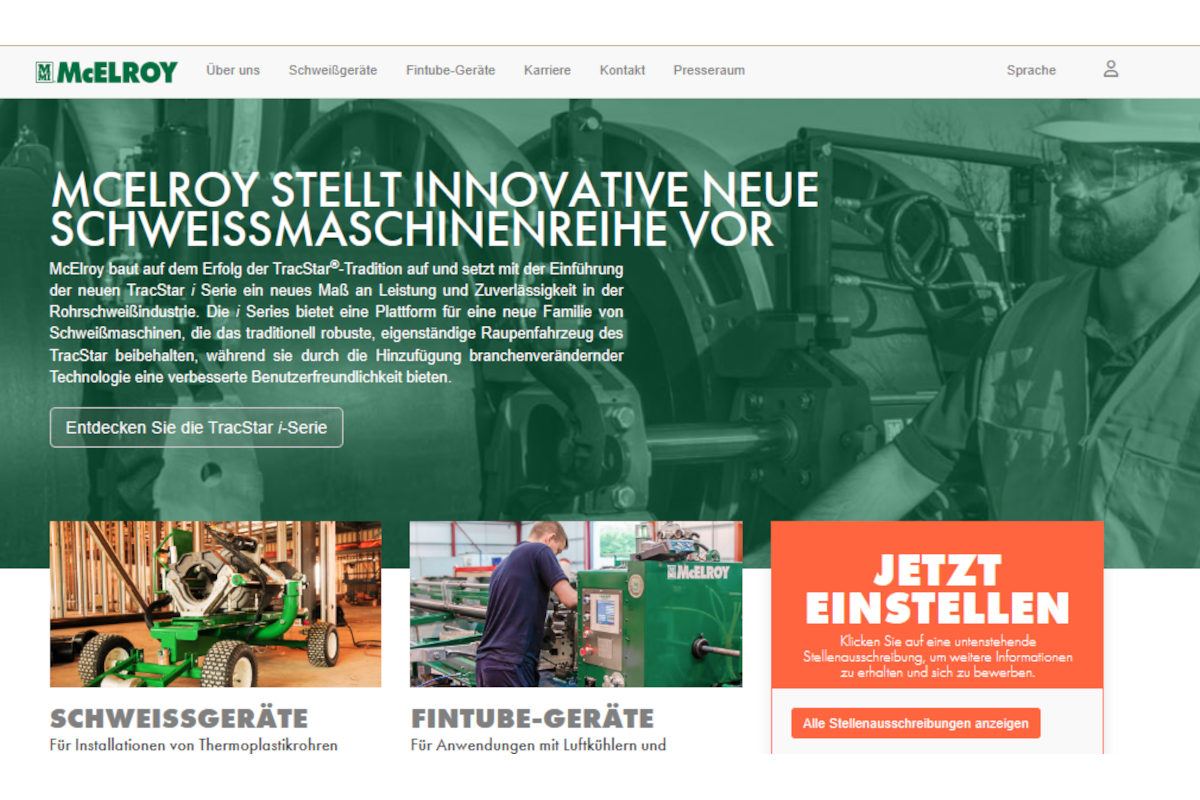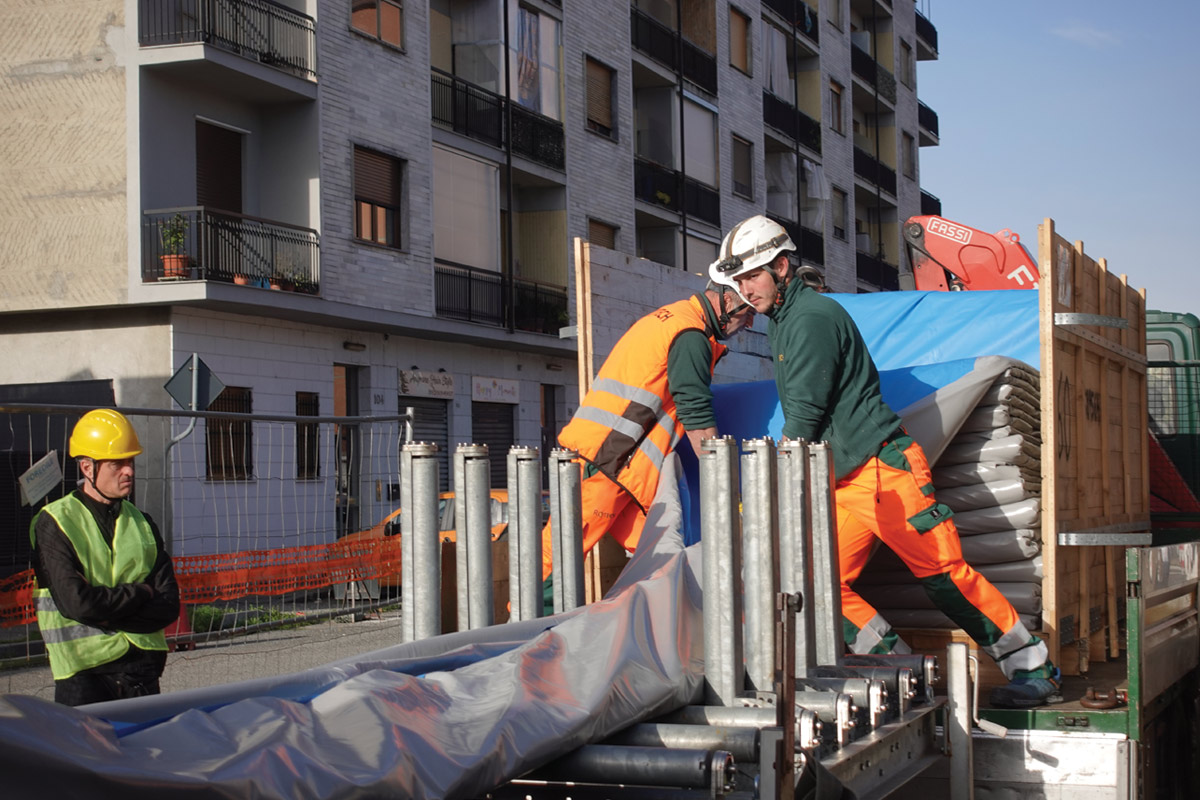Visser & Smit Hanab’s Diversity Provides Key to Success
What began with those two men has grown to more than 1,200 employees spanningseveral countries as its interests continue to expand. The company has grown upright along with the development of the cable and pipeline network in theNetherlands, with a scope of operations that encompasses regional, national andinternational projects and clients that include public utility companies,industrial concerns, telecom companies and government bodies.
Over the years, Visser & Smit Hanab has met the challenges of an evolvingunderground infrastructure industry by including in its repertoire ofinstallation methods trenchless technologies — most notably horizontaldirectional drilling (HDD) and microtunneling. In fact, Visser & Smit Hanabwas the first HDD contractor in the Netherlands, introducing directionaldrilling to the country in 1984. It was approached during the 1970s by Reading& Bates Construction — one of the first HDD contractors in the United States— to start a venture partnership company in the Netherlands that was eventuallycalled Visser & Smit Reading & Bates.
“That is how horizontal directional drilling got started in the Netherlands,”explains Hans Ringers, vice president of Visser & Smit Hanab bv. “We werethe first company here to own its own rig.”
And from there, Visser & Smit Hanab has established itself as the leadingHDD contractor in the Netherlands, as well as throughout Europe. But HDD is arelatively new aspect of its business. The company is also known for itslongtime use of open-thrust boring (since 1955) and later microtunneling. Evenwith the abundance of work that HDD and microtunneling generates, they only makeup about 20 percent of the work that Visser & Smit Hanab does. The restincludes pipe-laying, cable-laying, equipment installations at refineries andchemical plants.
With its diversified interests, Visser & Smit Hanabstands as the largest pipelining contractor in the Netherlands.
Leading Visser & Smit Hanab today is its president, Jack de Moel. Ringershas been with the company since 1977, starting as the head of its technicaldepartment and ascending to vice president in 1990. Ringers has become a leaderwithin the international trenchless technology community and even served sevenyears as president of the DCA-Europe organization.
Company History
In 1827, the first gasplant was established in Rotterdam, Holland, to facilitate streetlights and 26years later, water pipelines were constructed in Amsterdam. In 1881, thetelephone was introduced to Holland, one of 12 provinces in the Netherlands.With all of this in mind, Martinus Visser, a contractor, and Johan Smit, aengineer, founded the company Visser & Smit in Papendrecht in 1900, with thepurpose of establishing, building and operating water companies, including thedistribution of pipelines.
In 1945, the trading and construction company Hanab was established inOegstgeest, Netherlands, with the purpose of reconstructing the country afterWorld War II, especially in the field of utility facilities. In 1970, Visser& Smit was acquired by Adriaan Volker Dredging Co. of Rotterdam; in 1972,Hanab was acquired by the Stevin Group of Beverwijk. Those two companies mergedin 1978 to become Royal Volker Stevin — giving Visser & Smit and Hanab thesame parent company. The merger divided Visser & Smit into two companies:Visser & Smit Construction and Visser & Smit Pipelines.
In 1979, Visser & Smit Pipelines and Hanab merged, becoming Visser &Smit Hanab bv. The head office has remained in Papendrecht along the MerwedeRiver, the main shipping line from Germany to Rotterdam, which is one of thelargest ports in the world.
“Visser & Smit Hanab has always had its head office in Papendrecht, whichis in the western part of the Netherlands, where up to the discovery of the gasfields in the north of the country in the 1960s, was the place where all thebuilding and construction took place and where the largest part of thepopulation was living,” Ringers says.
With the discovery of gas in the northern province of Groningen, manycompanies had to relocate with their crews to establish regional offices, whichis what V&SH did as well.
“In general, I would say to put offices close to your clients and establish agood, close, cooperative relationship between engineers and the client [isimperative],” Ringers says. “That is necessary to be successful.” It is thisrelationship that Ringers points to when asked how Visser & Smit Hanab hasremained so successful over the years.
About the Netherlands
By all accounts,the Netherlands is a key transportation hub into the rest of Europe, with accessto the Rhine, Meuse and Scheld rivers. There are also direct connections to thehigh-speed European rail network and direct links from its ports to the Europeanmotorway network. As a result, country leaders are always looking for ways toprevent traffic congestion during utility work, as well as being kind to theenvironment. Enter trenchless technology.
As described by Ringers, there is a tremendous amount of HDD andmicrotunneling work that takes place in the Netherlands due to several factorsin addition to those above. The Netherlands is a low-lying country, with itslowest point at 6.7 m below sea level. The country’s population stands atapproximately 16.3 million people, living in an area of just 41,528 sq km thathas one of the most dense underground network infrastructures in the world withabout 1.8 million km of buried services, according to Ringers. Large areas ofthe country have a high water table and often have ground made up primarily ofsand, which is difficult to trench. The Netherlands is a country that iscrisscrossed by local roads, rivers and canals.
All of these factors make the use of trenchless technologies a practicalmethod of infrastructure installation, he says, adding that the Netherlands wasthe first of the European Union countries to see the benefits of adopting theroutine use of trenchless technologies to install its underground utilitynetworks.
“A country like the Netherlands requires specific solutions because of theamount of obstacles in the way, whether for pipeline construction or cablelaying,” Ringers says. “The Netherlands is a small country with many inhabitantsand a lot of water, so skill is needed.
“In the past, Visser & Smit Hanab was the contractor with the experienceto construct siphons in several different ways across the rivers or railroadsand other obstructions, even with the high groundwater level,” he adds.
But then Martin Cherrington created directional drilling in the United Statesin the 1970s, and several new methods involving microtunneling came from Japan,led by Iseki and Daiho. And recently, Herrenknecht has established itself as aleader of small and large diameter tunneling. Today, Visser & Smit Hanabutilizes these methods.
Visser & Smit Hanab owns 15 HDD and microtunneling machines — mainly fromWIRTH and Herrenknecht. Its rigs range in size from 3 to 250 tonnes and theyhandle all diameter size of work for all utilities — water, sewer, electric,cable, oil, gas, etc.
“HDD is a much-accepted method of installation,” Ringers says. “For rivers,it is a must to use HDD in Europe, even for small creeks in Holland wheredrilling is very easy and soft grounds are common. Microtunneling is used a lotunder railway crossings because they do not interrupt the railways.”
Most of Visser & Smit Hanab’s work is in the Netherlands but it also hasoffices in the United Kingdom, Germany and Belgium — which goes to the companyphilosophy Ringers discussed earlier about being near your clients. But thecompany is doing work in France, Spain, Scandinavia and Portugal. Of late,V&SH has begun doing projects in Eastern Europe.
Challenges
What challenges does theindustry face? Many, according to Ringers, with proper planning before startinga project at the top of the list. “Enough challenges remain in our drillingindustry if we do not take the proper measures at the start of a project,” hesays. “If we do not, a setback is the only result. Soil surveys must be taken tothe right depth and be properly analyzed if we want to bring the industry to amuch higher standard and at the same time show the many possibilities of HDD andmicrotunneling in the building and construction industry.
“As a company, V&SH accepts all challenging projects,” Ringers adds. “Butengineering firms and clients have to support their aims.”
Ringers says more research must be done and there must be more recognition bythe engineering community of the possibilities of drilling. That will helpdevelop accurate drilling and use the technology for other purposes thancrossing rivers and roads but also for the construction of outfalls in rockareas.
“We all have to realize that since the first introduction of HDD andmicrotunneling, the drilling industry, suppliers and contractors have done atremendous amount of research and development with much success,” Ringers says.“The demand from clients and engineering companies was sometimes limited by thepossibilities of that time. However, many, many difficult crossings and drilledoutfalls have been done — and not always without large setbacks. But also notwithout learning lessons along the way.”
One area that V&SH, as well as others in the Netherlands, have beenresearching is Combi-drilling — an installation method that combines HDD andmicrotunneling. Currently, due to the soft grounds, the size of the pipe andlength of the bores are somewhat limited in the Netherlands. By combining thetwo trenchless methods, this would allow for longer drives and larger diameterbores. However, this idea is still in development and is proving to becost-prohibitive right now, Ringers says.
As HDD and microtunneling continue to grow with longer distances and largerdiameters, V&SH knows it will be right in the thick of things and eagerlyawaits its next challenge. But Ringers knows his company was a part of HDD’s andmicrotunneling’s eventful beginnings in the Netherlands.
“Visser & Smit Hanab did its part in these drillings with some majorprojects and enthusiastic employees of this beautiful industry,” Ringers says.“Unfortunately our work is under the ground and can never be seen — justused.”




